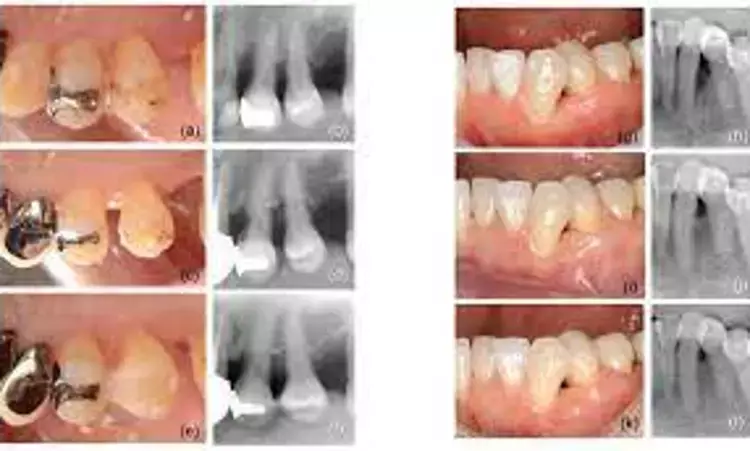- Home
- Medical news & Guidelines
- Anesthesiology
- Cardiology and CTVS
- Critical Care
- Dentistry
- Dermatology
- Diabetes and Endocrinology
- ENT
- Gastroenterology
- Medicine
- Nephrology
- Neurology
- Obstretics-Gynaecology
- Oncology
- Ophthalmology
- Orthopaedics
- Pediatrics-Neonatology
- Psychiatry
- Pulmonology
- Radiology
- Surgery
- Urology
- Laboratory Medicine
- Diet
- Nursing
- Paramedical
- Physiotherapy
- Health news
- Fact Check
- Bone Health Fact Check
- Brain Health Fact Check
- Cancer Related Fact Check
- Child Care Fact Check
- Dental and oral health fact check
- Diabetes and metabolic health fact check
- Diet and Nutrition Fact Check
- Eye and ENT Care Fact Check
- Fitness fact check
- Gut health fact check
- Heart health fact check
- Kidney health fact check
- Medical education fact check
- Men's health fact check
- Respiratory fact check
- Skin and hair care fact check
- Vaccine and Immunization fact check
- Women's health fact check
- AYUSH
- State News
- Andaman and Nicobar Islands
- Andhra Pradesh
- Arunachal Pradesh
- Assam
- Bihar
- Chandigarh
- Chattisgarh
- Dadra and Nagar Haveli
- Daman and Diu
- Delhi
- Goa
- Gujarat
- Haryana
- Himachal Pradesh
- Jammu & Kashmir
- Jharkhand
- Karnataka
- Kerala
- Ladakh
- Lakshadweep
- Madhya Pradesh
- Maharashtra
- Manipur
- Meghalaya
- Mizoram
- Nagaland
- Odisha
- Puducherry
- Punjab
- Rajasthan
- Sikkim
- Tamil Nadu
- Telangana
- Tripura
- Uttar Pradesh
- Uttrakhand
- West Bengal
- Medical Education
- Industry
Composite outcome measures may help predict clinical outcomes after periodontal regenerative therapy

Composite outcome measures may help predict clinical outcomes after periodontal regenerative therapy suggests a new study published in the Journal of Periodontology
Recently, a composite outcome measure (COM) was proposed to describe the short-term results of periodontal regenerative treatment. The present retrospective study aimed at evaluating the prognostic value of COM on clinical attachment level (CAL) change over a 4-year period of supportive periodontal care (SPC).
Seventy-four intraosseous defects in 59 patients were evaluated at 6 months and 4 years following regenerative treatment. Based on 6-month CAL change and probing depth (PD), defects were classified as: COM1 (CAL gain ≥3 mm, PD ≤4 mm); COM2 (CAL gain <3 mm, PD ≤4 mm); COM3 (CAL gain ≥3 mm, PD >4 mm); or COM4 (CAL gain <3 mm, PD >4 mm). COM groups were compared for “stability” (i.e., CAL gain, no change in CAL or CAL loss <1 mm) at 4 years. Also, groups were compared for mean change in PD and CAL, need for surgical retreatment, and tooth survival.
Results
At 4 years, the proportion of stable defects in COM1, COM2, COM3, and COM4 group was 69.2%, 75%, 50%, and 28.6%, respectively, with a substantially higher probability for a defect to show stability for COM1, COM2, and COM3 compared with COM4 (odds ratio 4.6, 9.1, and 2.4, respectively). Although higher prevalence of surgical reinterventions and lower tooth survival were observed in COM4, no significant differences were detected among COM groups.
Composite outcome measure (COM) may be of value in predicting CAL change at sites undergoing SPC following periodontal regenerative surgery. Studies on larger cohorts, however, are needed to substantiate the present findings.
Reference:
Simonelli, A, Farina, R, Minenna, L, Tomasi, C, Trombelli, L. Prognostic value of a composite outcome measure for periodontal stability following periodontal regenerative treatment: A retrospective analysis at 4 years. J Periodontol. 2023; 1- 10. https://doi.org/10.1002/JPER.22-0645
Dr. Shravani Dali has completed her BDS from Pravara institute of medical sciences, loni. Following which she extensively worked in the healthcare sector for 2+ years. She has been actively involved in writing blogs in field of health and wellness. Currently she is pursuing her Masters of public health-health administration from Tata institute of social sciences. She can be contacted at editorial@medicaldialogues.in.
Dr Kamal Kant Kohli-MBBS, DTCD- a chest specialist with more than 30 years of practice and a flair for writing clinical articles, Dr Kamal Kant Kohli joined Medical Dialogues as a Chief Editor of Medical News. Besides writing articles, as an editor, he proofreads and verifies all the medical content published on Medical Dialogues including those coming from journals, studies,medical conferences,guidelines etc. Email: drkohli@medicaldialogues.in. Contact no. 011-43720751


